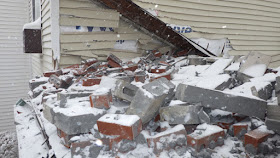The man died several days after being struck by a steel coil.
HOLLAND — Following a workplace accident that resulted in the death of a 56-year-old man, the Michigan Occupational Safety and Health Administration (MIOSHA) is investigating an incident at Challenge Manufacturing in Holland.
At 6:38 p.m. on Friday, Dec. 22, a man was taken to Spectrum Butterworth Hospital in Grand Rapids after getting hurt at Challenge Manufacturing, located at 1401 S. Washington Ave. According to Ottawa County Central Dispatch Authority, the man, identified as Scott Teusink, 56, of Holland, was struck by a coil of steel while working.
Holland Police Department officers and Holland firefighters responded to the scene, along with an AMR ambulance. The ambulance took Teusink to the hospital, and he was conscious when he was taken to the hospital.
Eight days later, Teusink died on Dec. 30 at the Meijer Heart Center in Grand Rapids with his family by his side. Teusink is the son of well-known Holland High School and Hope College tennis coach Tiger Teusink and Shirley Teusink. He graduated from Holland High School, where he played basketball.
Teusink was a certified emergency medical technician and practiced podiatry medicine in New York City for 25 years before moving back to Holland to be with his family two years ago.
“He was an extremely dedicated individual,” said Tiger Teusink. “He was always a leader and always did his best, and that is all you can ask of someone. That made us really proud.”
According to MIOSHA’s public information officer Jeannie Vogel, Challenge Manufacturing is now under investigation for the workplace fatality, as is standard practice for fatal workplace accidents.
“MIOSHA was notified of this fatality on Jan. 2 and opened an investigation the same day,” Vogel said.
While Vogel was unable to comment on an open investigation, she said this type of investigation may take “several weeks or months to complete.”
Challenge Manufacturing is an automotive parts manufacturer founded in 1981 in Walker. The company has 3,000 employees and manufacturing plants in Walker, Holland, Pontiac, and several other locations throughout the U.S. Challenge Manufacturing did not return several requests from The Sentinel for comment about Teusink’s death.
Teusink’s memorial service will be held on Saturday, Jan. 6, at the Christ Memorial Church Chapel at 595 Graafschap Rd and visitation will be from 12:30-2:30 p.m. with a service following visitation.
In lieu of flowers, the family asks people to donate to The Warm Friend senior living community at 5 E. Eighth St. in Holland.
“Obviously we are going to miss him,” said Tiger Teusink. “We don’t get to choose when we go, God makes that decision. We have a strong faith in our family and have tremendous support and love from our family and friends.”
=================
Scott Howard Teusink
Tuesday, January 02, 2018 11:49 a.m. by Patty Vandenberg
Scott Howard Teusink, DPM, 56, died on December 30, 2017 in the Meijer Heart Center in Grand Rapids. His family was by his side.
Scott was born April 26, 1961 in Grand Rapids to Tiger and Shirley (Dykstra) Teusink. He was a graduate of Holland High School, De Pauw University, and The Ohio School of Podiatry Medicine, Scott played basketball for Holland High School, where he was selected All-State honors. At De Pauw University, he played basketball, practiced as a certified EMT, excelled in the classroom, and spent a semester in Haiti working with a selected medical team.
Scott practiced Podiatry Medicine in New York City for 25 years working at various clinics. He returned to Holland two years ago to be near his family and was working at a local manufacturing plant.


















